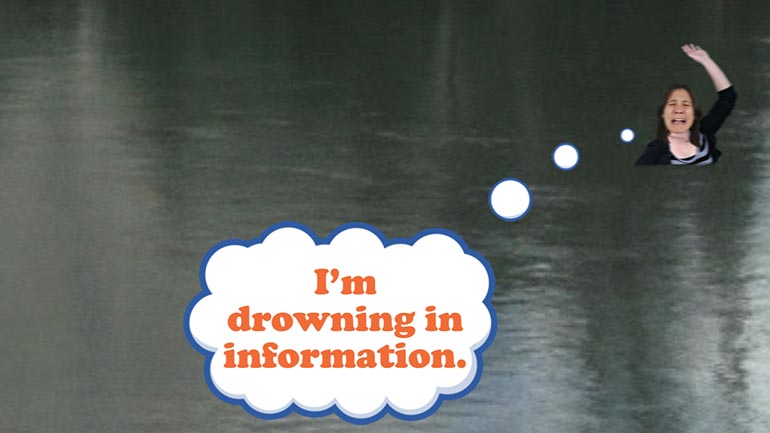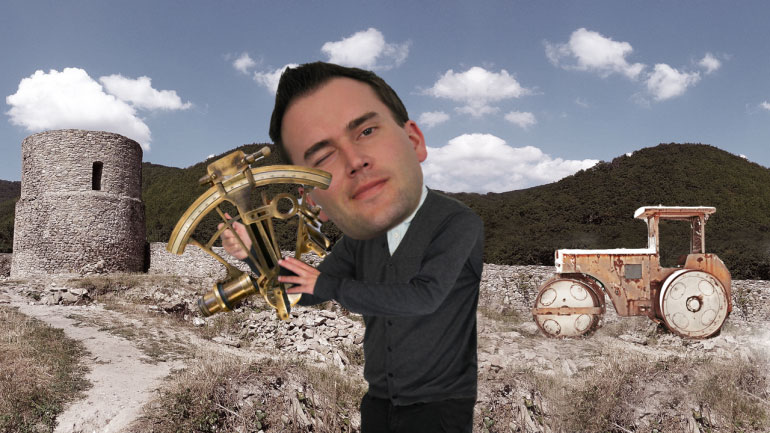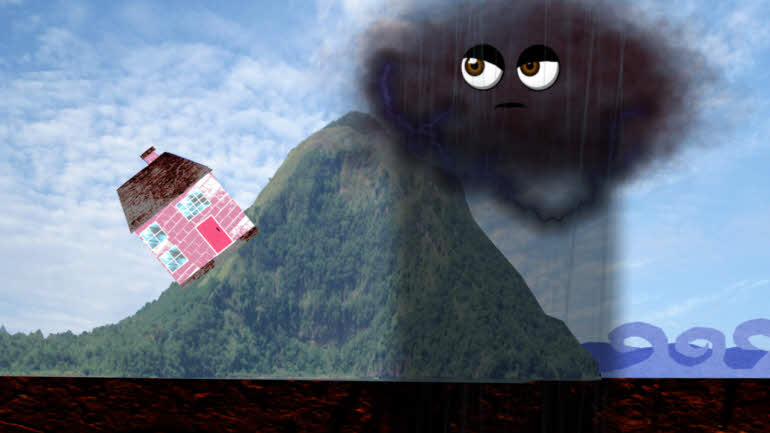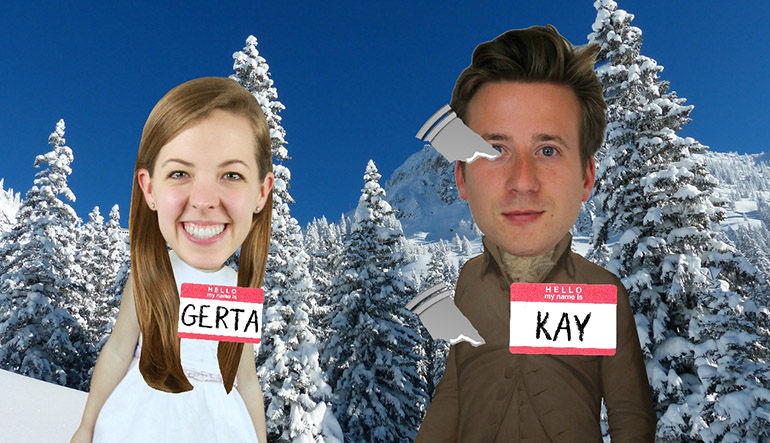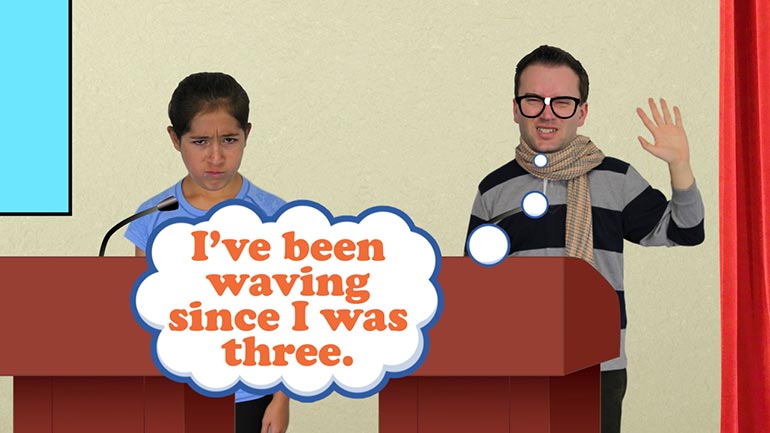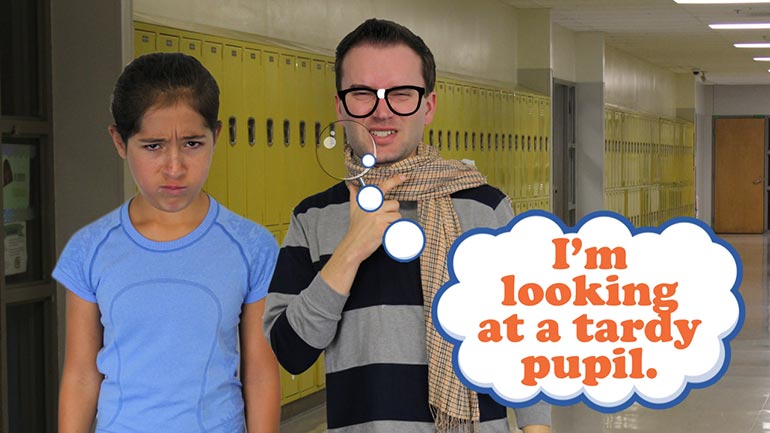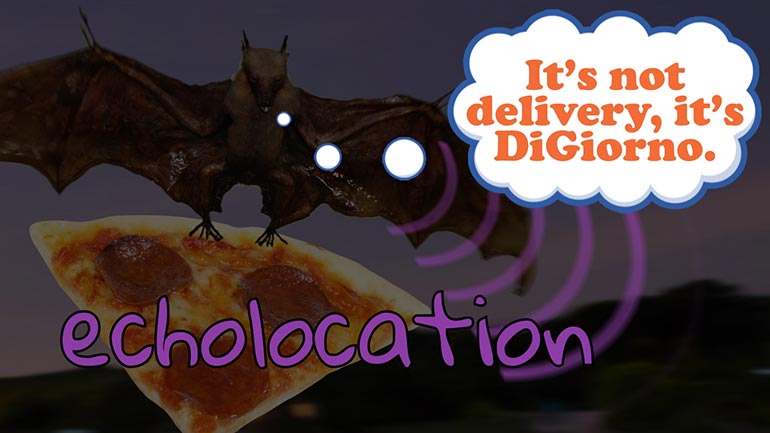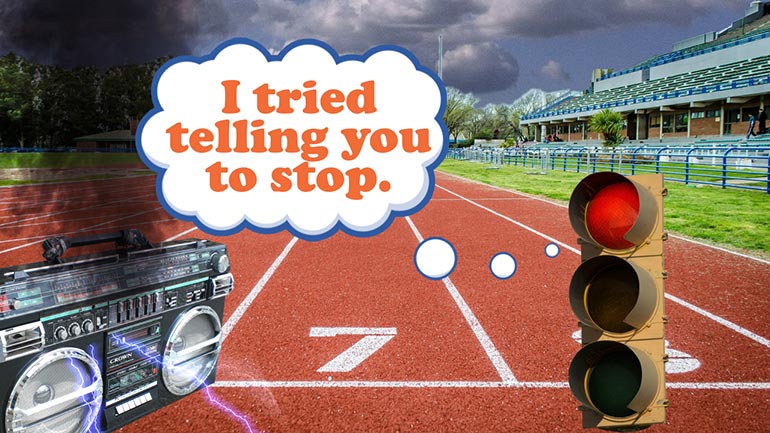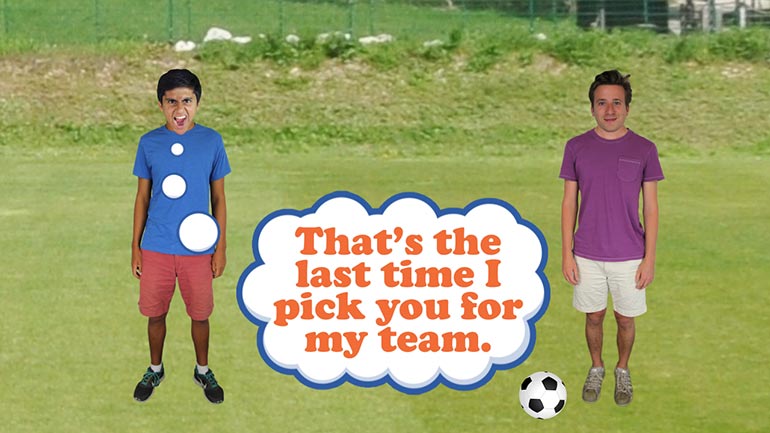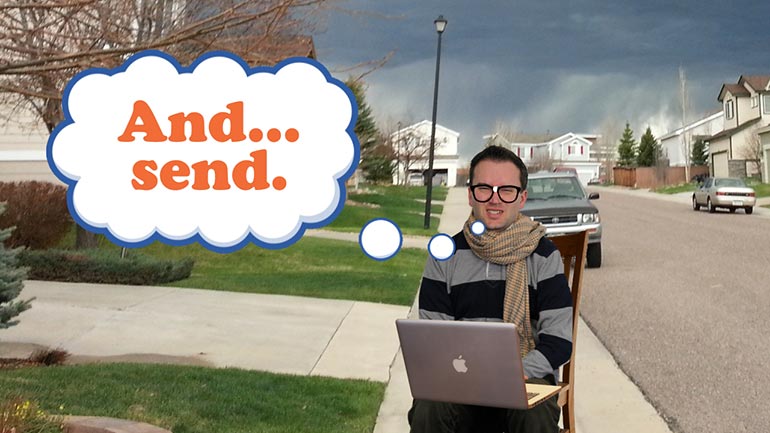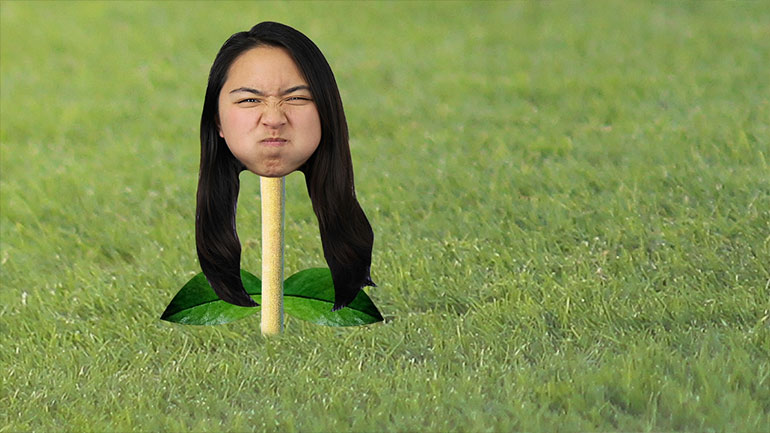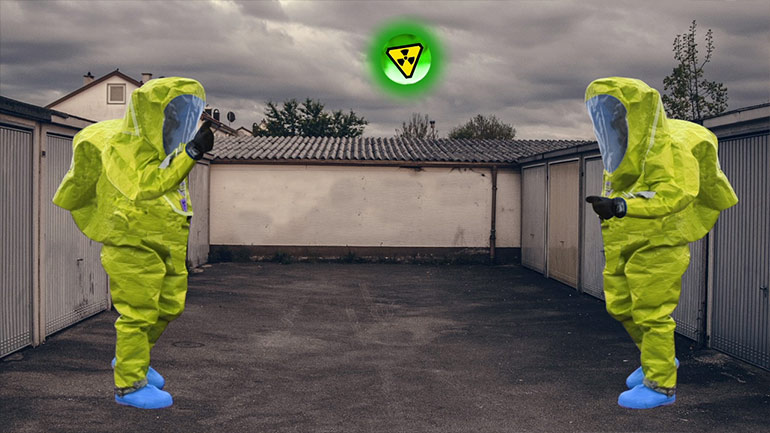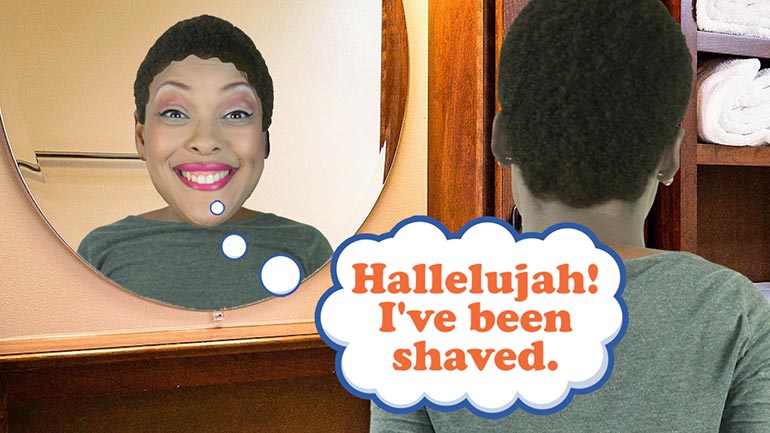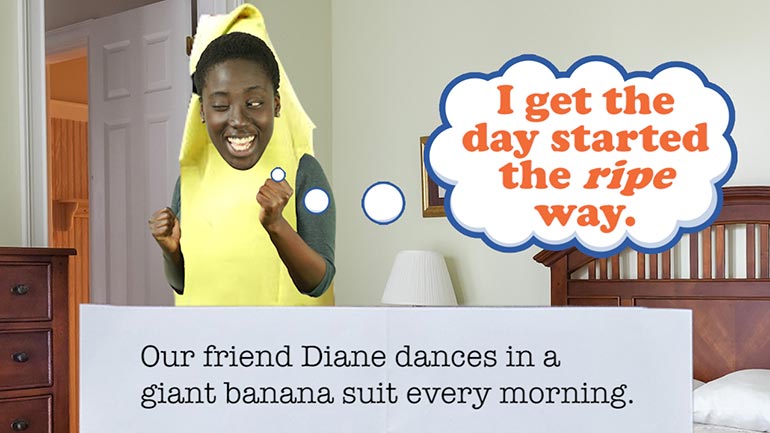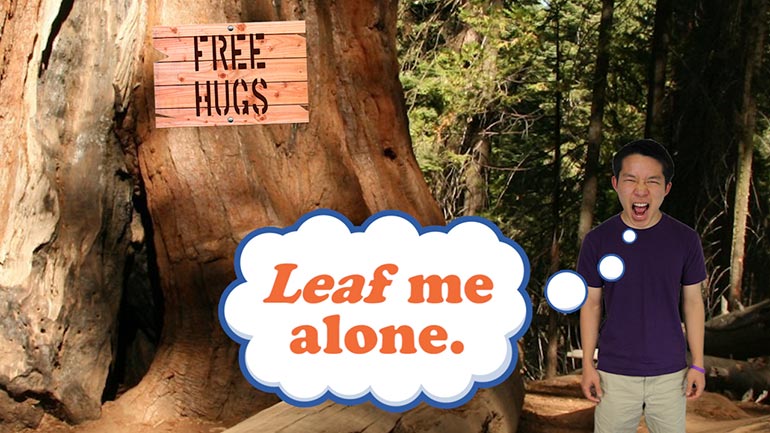ShmoopTube
Where Monty Python meets your 10th grade teacher.
Search Thousands of Shmoop Videos
Science Videos 21 videos
Apologies in advance if you came here really excited about a bicycle you can ride on water. We get that a lot. This video is really about the cycle...
Today we've got some geography. But that's not all, there are tons of extra features included free of charge. We've got rivers, lakes, deserts, mou...
There are tons of different types of maps. We practically need a map map to remember all of them. But don't worry, we've squeezed a few of the impo...
Science 4: Types of waves 119 Views
Share It!
Description:
Today's lesson is about the different types of waves. We personally like the wild two-handed wave, but there are plenty of others that work just as well.
Transcript
- 00:04
[Coop and Dino singing]
- 00:13
When we think of waves, our first thought might be the ocean: those big, beautiful waves [Man surfboarding on a wave]
- 00:17
are the dreams of surfers…
- 00:19
…and the nightmares of sandcastle builders.
- 00:21
But there are plenty of other kinds of waves, like the sound waves produced by sandcastle
Full Transcript
- 00:24
builders as they curse the cruel, cruel ocean. [Man cursing the waves crushing his sandcastle]
- 00:27
But before we dive into waves…
- 00:29
…we're going to learn about two important parts of every wave: frequency and amplitude.
- 00:33
The frequency of a wave is the number of times its wave pattern repeats in a given amount [Coop discussing frequency of waves]
- 00:38
of time.
- 00:39
So over some amount of time, a high frequency wave will speed by, and repeat its wave pattern
- 00:43
a bunch of times.
- 00:45
On the other hand, a low frequency wave will seem sluggish by comparison, repeating its
- 00:49
wave pattern fewer times.
- 00:51
Aw…looks like this wave could use a nap. [Low frequency wave reading]
- 00:54
The amplitude of a wave is the distance from its rest position to its highest point. [Dino teaching about amplitude of waves]
- 00:58
The higher the energy of the wave, the higher the amplitude, so while a high-energy wave
- 01:02
will have an amplitude that reaches for the stars…
- 01:05
…a low-energy wave will barely be able to reach the cupboards.
- 01:08
Which is a shame…that's where all the best snacks are kept! [Cupboard opens and snacks appear]
- 01:11
Okay, now that we've covered frequency and amplitude, it's time to dive into waves!
- 01:15
Appropriately, we'll start with water waves!
- 01:17
Many water waves are caused by wind whipping up the water… [Wind creating the waves]
- 01:20
…but some are created by the gravitational pull of the moon.
- 01:23
And you thought all the moon did was sit up in the sky and look pretty.
- 01:26
Next on our wave list?
- 01:27
Sound waves.
- 01:28
In the same way that water waves are vibrations of water…
- 01:30
…sound waves are vibrations of air.
- 01:33
Sound waves move crazy fast, at 330 miles per second. [Coop discussing sound wave facts]
- 01:36
Usain Bolt, eat your heart out.
- 01:39
Sound waves travel through the air, so they can't travel in a vacuum.
- 01:42
Not that anyone would want to travel in a vacuum…can you imagine the dirt and dust, [Musical note trying to get inside a vacuum]
- 01:46
and…oh, not that kind of vacuum.
- 01:48
Gotcha.
- 01:48
Ahem.
- 01:49
So outer space is a pretty quiet location.
- 01:51
You might have to worry about running out of oxygen, but hey, you don't have to worry [Man floating in space]
- 01:54
about loud neighbors.
- 01:56
If you're on our wavelength, you know what we'll be discussing next…
- 02:00
…Earthquakes!
- 02:01
Sometimes huge masses of the Earth's surface try to move past each other, but can't.
- 02:05
How rude.
- 02:06
As they push and push, friction and energy build up between them… [Earth plates bumping into each other]
- 02:09
…until all that energy gets released at once, as seismic waves that ripple through
- 02:14
the Earth's crust.
- 02:15
These seismic waves can cause all sorts of trouble, like avalanches and tsunamis.
- 02:19
Another kind of wave comes from lasers. [Dino discussing laser waves]
- 02:21
"Laser" stands for "Light Amplification by Stimulated Emission of Radiation," which does
- 02:25
have a certain ring to it, but "laser" is a bit catchier.
- 02:29
Lasers emit light, but unlike a flashlight, that throws light waves all over the place, [Man in the dark turns on flashlight]
- 02:33
willy-nilly…
- 02:34
…a laser beam keeps waves tightly together.
- 02:36
Lasers are used all over the place, from electronics to medicine to metalwork.
- 02:40
Good luck using a flashlight to perform a surgical operation.
- 02:43
We also see waves used in the exchange of information.
- 02:45
In telecommunications, carrier waves are high-frequency waves that convey information. [Coop discussing telecommunications]
- 02:50
For a long time, analog signals were the only game in town: smooth, continuous waves that
- 02:54
were used to broadcast stuff like radio and TV.
- 02:56
But more recently, digital signals have become more popular.
- 03:00
Unlike the continuous analog waves…
- 03:01
…digital waves only capture discrete bits of information, making them blockier in appearance.
- 03:06
However, since you're probably watching what's on TV instead of readout of the waveforms [Girl watching TV]
- 03:09
of the information going into your TV, you probably won't notice.
- 03:13
And if you are reading the information waveforms, then remind us not to discuss last night's
- 03:17
episode around the water cooler with you. [Man and woman talking by the water cooler]
Related Videos
Sticks and stones, right? Well...only sometimes. It's a good idea to make sure your words aren't going to hurt others. Let's look at some ways to d...
Learn to debate like a champ. It's way better than debating like a chimp. That just takes mudslinging to a whole new level.
Today we'll learn about biographies and autobiographies. And no, the second one has nothing to do with the lives of cars.
In this lesson we'll subject you to some verbs and predicates. Each one is a necessary part of a complete breakfas—er...sentence.
Choosing words carefully is important. You may end up vexing the assemblage of citizens you're conversing with...or you might even just plain bore...

